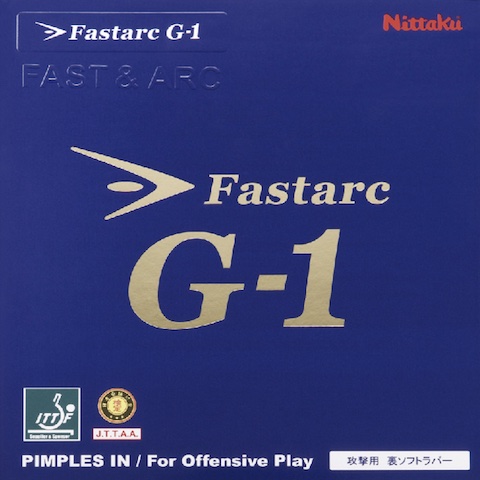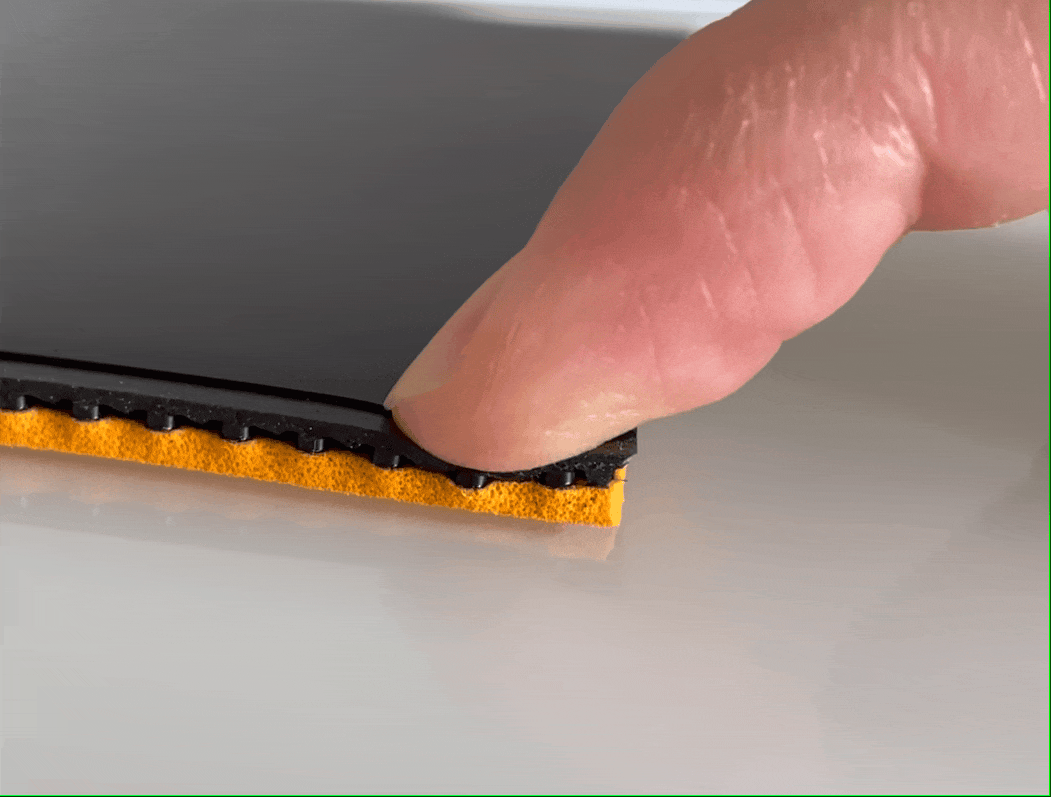Nittaku Fastarc G-1 Review - Table Tennis Rubber Test
Is Nittaku Fastarc G-1 the Best Tenergy 05 Alternative?

Today we'll have a look at one of our all-time favorite rubbers: The Fastarc G-1 by Japanese brand Nittaku. This rubber is incredibly popular in Japan while less used in European countries where companies like Tibhar, Andro, Donic and Butterfly are more dominant. The main selling point of the Fastarc G-1 is that it is said being a great, cost-effective alternative to the ever so popular Tenergy 05 and we have to agree as we have been using this rubber for many years now and it's been great. Given the price point of roughly only $40, the Fastarc G-1 delivers an amazing price-to-performance ratio when compared to $60 for Tenergy 05 or even $80 for Butterfly's Dignics series. Even Japanese professional player Mima Ito like to play the G-1 on her relentless forehand. If Mima can smash with this rubber, can you as well?
Playing Characteristics of Nittaku Fastarc G-1
In one word: Spin. This is the great benefit of the G-1. Its combination of a hard (but not too hard), coarse-pored sponge can generate a ridiculous amout of spin especially when opening up against downspin. Not only does it help a lot to get the ball over the net, it also creates so much rotation on the ball that most players will have huge struggle to return the ball back on the table without overshooting. This is something we noticed playing this rubber for many years now and it's always a joy to see opponets being overwhelmed everytime we pull out a heavy topspin knowing it's probably not coming back on the table.

Looking at the speed of the G-1, it's not so overwhelming as you might think. Don't get us wrong. It's still a fast rubber but also controllable. The reason for this is that the built-in catapult effect is more linear compared to that of Tenergy 05 for example. The G-1 always delivers the same feel, no matter if you play short behind the net or from far away from the table. Unlike Tenergy 05, the Fastarc G-1 therefore makes it easier to predict how the ball will travel and how much force the player has to apply. This is something which can be a bit more difficult with Tenergy 05 which can be unpredictable at times. That being said, as you can still generate immense power and speed (Jeremy Clarkson would love this rubber), we see this rubber suited best for players playing from mid- to far distance with all-out power topspin. The power and spin the Fastarc G-1 can generate makes this rubber a real weapon when it comes to topspin rallys.
Is Fastarc G-1 Good for Backhand?
Short answer: Yes. The G-1 can definitely be a great backhand rubber due to its relatively well controllable, linear catapult effect. The high arc it generates can help you to lift up those underspin balls with a backhand topspin. However, be aware that you need to be at a certain skill level and stable with your backhand technique. At least 3 years of continuous training is required to be able to play the G-1 on the backhand. If you feel like you are not ready yet, why not have a look at its younger brother, the Nittaku Factive, which is a bit softer, slower and therefore easier to control. You can find more information about Nittaku Factive on our extended article about the best backhand table tennis rubbers.
Downsides of Nittaku Fastarc G-1
Even though we believe that the G-1 is one of the best rubbers out there on the market, it's not perfect. There are a few downsides which we would like to mention. One problem for example is its sensitive sponge. If you are a player who likes to re-glue your rubber frequently, you need to be extremely careful when removing glue from the Fastarc G-1 as it might leave small craters in the sponge when not handled with care. These craters can have an effect on the playing characteristics, so be careful when removing glue residue.
When it comes to downsides during play, there are two things which have something to do with the high arc and the springy nature of the rubber. When playing short it's possible that your push might land a bit too long and too high. This can be difficult to control especially when you're not sure about the incoming spin. Another problem can be during topspin loops close to the table. The Fastarc G-1 can be absolutely amazing when playing from further distance but playing closer can be a bit confusing at first due to the high arc the rubber produces. This however can be compensated quite easily by adapting your technique and close the racket angle a bit more. Once you get used to it, it should be no problem but can be irritating when playing the G-1 for the first time.
The Nittaku Fastarc Series – Comparison with C1, P1 and S1
The G-1 is part of a larger series offered by Nittaku which also includes the Fastarc C1, P1 and S1. All 4 rubbers are somewhat similar but have slight tweaks which differentiate them from each other catering to the needs for different player types. For example, the Fastarc C1 has the same topsheet as the G-1 but its sponge is a bit softer at 43° (compared to 47.5° of the G-1) which leads to more catapult effect and a slightly lower arc. It is said that the C1 offers more control which we couldn't confirm because at least to us the C1 felt a bit too mushy during play and the elevated catapult effect made it difficult to place the ball where we wanted it to land. The Fastarc P1 on the other hand has the same sponge hardness as the G-1 but a different topsheet. It is said this rubber is better for playing power-topspins from larger distance. A claim which we could only partly confirm. Yes, the P1 is great for this use-case but the G-1 can do the same but offer more spin at the same time, so why would you use the P1 if you can get the same power from G-1 but with less spin? Looking at the last member of the quartet, the S1 is marketed as the fastest version of the Fastarc series. A claim which we could definitely confirm. However, besides the fact that S1 is fast, it also delivers a way lower arc and has the least spin of all 4 rubbers. Its 45° sponge and topsheet are also very different compared to its siblings which make the S1 somewhat standout but in a negative way because it has the least spin and control within the Fastarc series. In our opinion, the added speed is not worth it to sacrifice other important attributes like spin and control. If you are really looking for a faster option, then you're more likely to find better options from other brands which do not compromise too much on spin and control.

Conclusion
Summing things up: Is the Fastarc G-1 a good alternative for Tenergy 05? Absolutely! Basically, it's a cheaper and easier to control version of its Butterfly pendant. Its springy sponge and grippy topsheet allow for insane amounts of spin you can generate on the ball and powerful topspins away from the table. At a price point of $40, this rubber is a must-buy if the spin-oriented playing characteristics match your personal style. Be aware though this is not a rubber for beginners. You need to be able to control it due to its springy nature and adapt your technique a bit especially for the short game to avoid returns which are too long or too high. Last but not least we'd like to mention that the G-1's sponge seems to be manufactured a bit thinner than those from other companies. This means that the 2.0 mm version is more like 1.8 mm and the Max version has about the same thickness as a normal 2.0 mm rubber. Overall, give this rubber a try if spin is the main weapon in your game. However, if you are looking for something a bit more tame, why not check out our article about easy-to-play tensor rubbers for intermediate players?
Looking for additional alternatives to Fastarc G-1 or Tenergy 05? Why not have a look at Xiom Vega Korea which is a bit more controlled rubber which we've reviewed extensively.
 Spin Testers
Spin Testers
